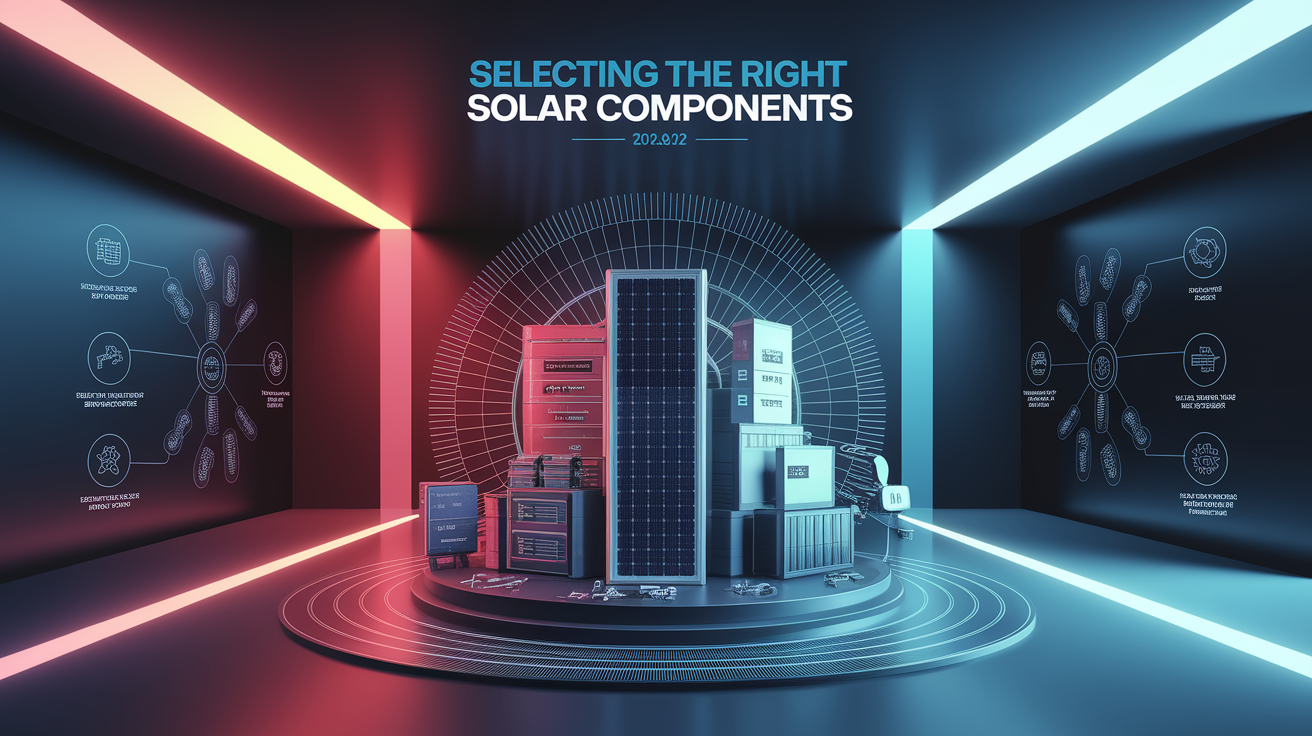Tiny Home Solar Solutions: A Practical Guide
Solar Spark: Bright Beginnings
Solar power transforms tiny homes from simple compact dwellings into self-sufficient energy powerhouses. These homes, typically ranging from 100 to 400 square feet, represent the perfect canvas for renewable energy implementation. The marriage of minimalist living and sustainable technology creates opportunities for complete energy independence while dramatically reducing environmental impact.

A photovoltaic (PV) system converts sunlight directly into electricity through solar panels, making it ideal for the space constraints and energy efficiency goals of tiny house living. The system generates DC power that gets converted to AC power through an inverter, enabling standard appliances to operate seamlessly. This setup supports both off-grid adventures and grid-tied configurations for maximum flexibility.
The financial benefits compound over time. While traditional homes struggle with rising utility costs, solar-powered tiny homes can achieve net-zero energy consumption, eliminating monthly electricity bills entirely. This energy independence proves especially valuable for tiny homes on wheels (THOW), where reliable power access becomes critical for comfortable living anywhere.
Assessing Your Energy Needs
Accurate energy assessment forms the foundation of any successful tiny house solar installation. Start by calculating your daily kilowatt-hour (kWh) consumption across all appliances, lighting, and electronic devices. Most tiny homes consume between 21,000 to 22,000 watt-hours daily, though this varies significantly based on lifestyle and appliance choices.
Key factors influencing your power requirements include:
- Occupancy patterns: Full-time residents versus weekend users have vastly different energy demands
- Climate considerations: Heating and cooling needs dramatically impact consumption
- Appliance efficiency: Energy Star-rated devices reduce overall system requirements
- Usage habits: Work-from-home setups require additional power for computers and networking equipment
Consider peak demand scenarios when sizing your system. Running a tiny house air conditioner on solar power requires substantial capacity, potentially doubling your baseline power needs during summer months. Similarly, electric heating elements, well pumps, and high-draw appliances create surge demands that your battery bank and inverter must handle.

Location-specific factors also influence system sizing. Solar irradiance varies by geographic region and season, affecting how much energy your panels generate daily. Northern climates may require 20-30% larger systems to compensate for reduced winter sunlight, while southern installations benefit from consistent year-round production.
Selecting the Right Solar Components
Component selection determines system performance, reliability, and longevity. Solar panels form the energy generation foundation, with monocrystalline panels offering the highest efficiency ratings—crucial for maximizing limited roof space on tiny homes.
Solar Panel Specifications:
- Power output: 250-400 watts per panel optimizes space utilization
- Efficiency ratings: Target 20%+ efficiency for premium space usage
- Physical dimensions: Ensure panels fit within available roof area
- Temperature coefficients: Lower coefficients maintain performance in hot climates
The charge controller regulates power flow from panels to batteries, preventing overcharging damage. MPPT (Maximum Power Point Tracking) controllers extract 20-30% more energy than PWM alternatives, justifying their higher cost through improved performance.

Deep cycle batteries store energy for nighttime and cloudy day usage. Lithium iron phosphate (LiFePO4) batteries offer superior performance despite higher upfront costs:
- Longer lifespan: 3,000-5,000 cycles versus 500-1,000 for lead-acid
- Faster charging: Reduced generator runtime and improved efficiency
- Weight savings: Critical for tiny homes on wheels
- Maintenance-free operation: No watering or equalization required
Power inverters convert DC battery power to AC electricity for standard appliances. Pure sine wave inverters ensure compatibility with sensitive electronics while modified sine wave units offer budget-friendly alternatives for basic loads.
Installation Essentials
Professional installation ensures safety, code compliance, and optimal performance, though many tiny home owners successfully complete DIY solar setup projects. Roof-mounted solar panels provide the most common configuration, utilizing otherwise unused space while maintaining the tiny home’s compact footprint.
Roof Installation Considerations:
- Structural integrity: Verify roof can support panel weight plus wind/snow loads
- Mounting systems: Use penetrating mounts with proper sealing or ballasted systems for metal roofs
- Tilt angles: Optimize for your latitude or adjust seasonally for maximum production
- Shading analysis: Avoid obstructions that reduce panel output
Ground-mounted or pole-mounted installations offer alternatives when roof space proves insufficient. These configurations enable larger arrays and easier maintenance access, though they require dedicated land area and may face zoning restrictions in some locations.

Electrical connections require careful attention to safety codes and proper wire sizing. DC wiring carries higher voltages and requires appropriate breakers, fusing, and grounding systems. AC connections must integrate with existing home wiring through transfer switches or separate sub-panels.
Complete solar power packages simplify installation by including matched components and detailed instructions. These off-grid solar kits eliminate compatibility concerns while providing technical support throughout the installation process.
Maintenance and Troubleshooting
Solar systems require minimal maintenance but benefit from regular monitoring and preventive care. High-quality panels and components reduce maintenance requirements while extending system lifespan, making premium equipment worthwhile investments.
Routine Maintenance Tasks:
- Panel cleaning: Remove dirt, debris, and snow that reduce output
- Connection inspection: Check for loose wires, corrosion, or damage
- Battery monitoring: Track voltage, capacity, and charging cycles
- Performance tracking: Monitor daily production and consumption patterns
Common troubleshooting issues include reduced power output, battery charging problems, and inverter faults. Systematic diagnosis starts with checking connections, measuring voltages, and reviewing system monitoring data. Many issues stem from loose connections, blown fuses, or incorrect settings rather than component failures.
Battery maintenance varies by technology. Lead-acid batteries require regular watering, equalization charging, and specific gravity testing. Lithium batteries need minimal attention but benefit from balanced charging and temperature monitoring.
Seasonal adjustments optimize year-round performance. Adjustable panel mounts enable tilt angle changes that increase winter production by up to 20%. Snow removal becomes critical in northern climates, where accumulated snow can eliminate power generation for days.
Sunlit Send-Off
Solar power enables tiny homes to achieve true energy independence while supporting sustainable living goals. The technology has matured to provide reliable, cost-effective solutions that eliminate utility bills and reduce environmental impact. Whether pursuing off-the-grid lifestyle freedom or simply reducing monthly expenses, solar systems deliver measurable benefits that improve over time.
Success depends on accurate energy assessment, quality component selection, and proper installation. Start with a comprehensive energy audit, size your system appropriately, and invest in proven components from established manufacturers. The initial investment pays dividends through decades of free electricity and the freedom to live anywhere the sun shines.







